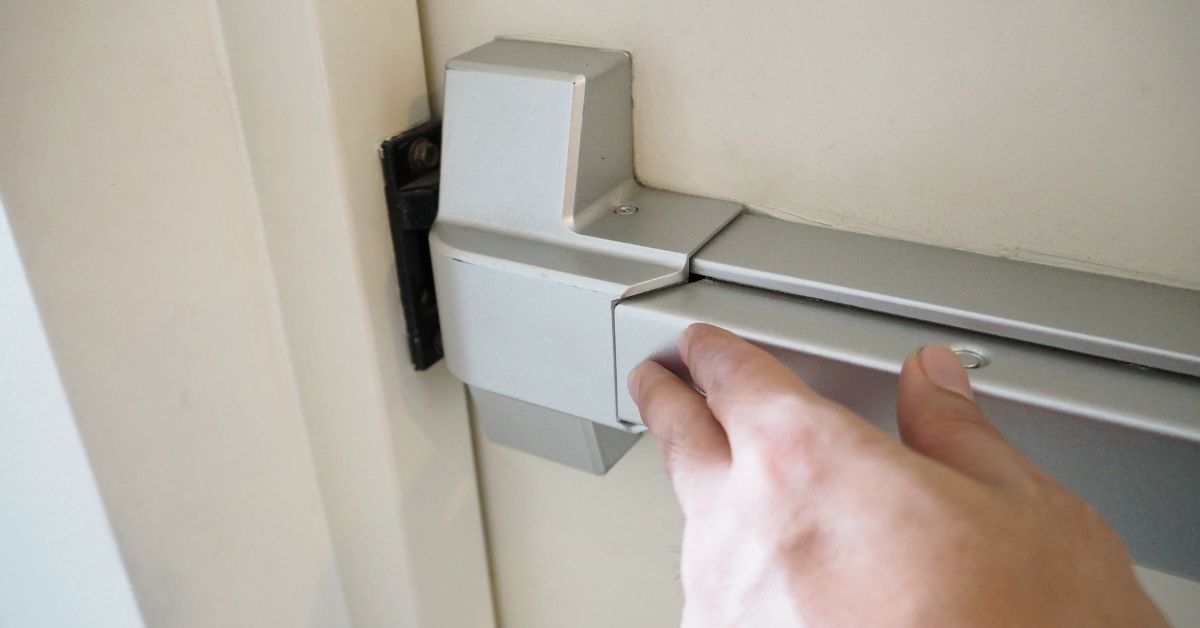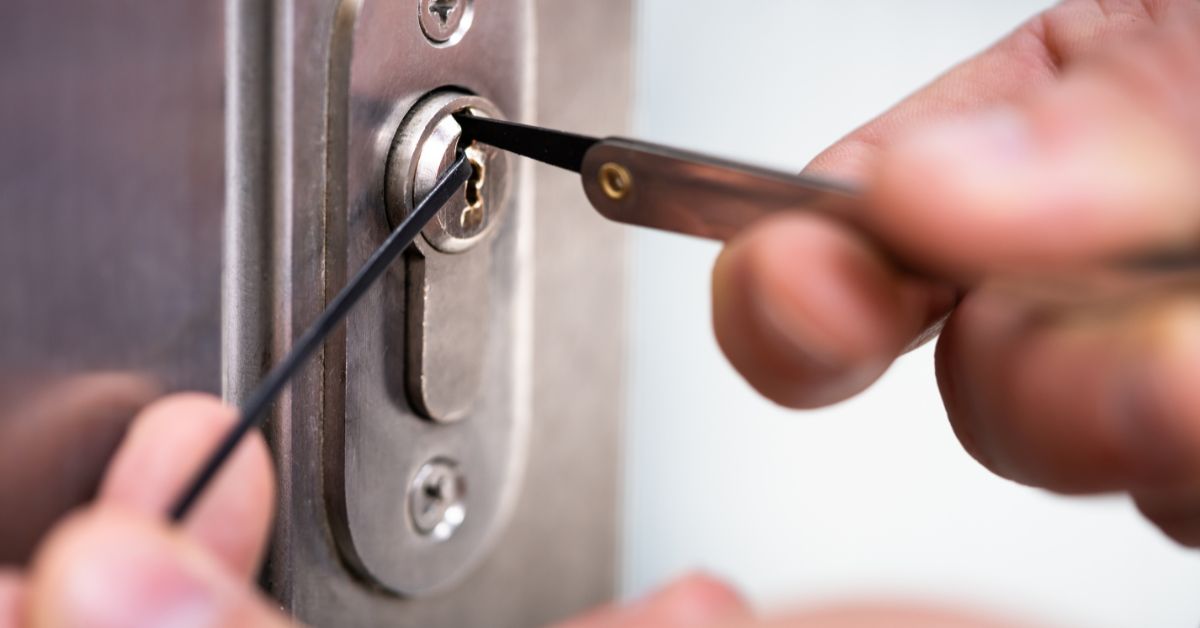A Complete Guide To Lock Hardware Grades

What Are Lock Hardware Grades?
Lock hardware grades are standards used to measure the durability, strength, and security of door locks. Established by the American National Standards Institute (ANSI) and the Builders Hardware Manufacturers Association (BHMA), these grades categorize locks based on their ability to withstand stress, usage, and impact.
Essentially, lock grades are a universal benchmark for the quality of a lock. These grades primarily fall into three categories:
- Grade 1: The highest level of performance and security.
- Grade 2: Medium-level security suitable for residential and light commercial use.
- Grade 3: Basic security typically found in residential properties.
When you understand the difference between these grades, it’ll be much easier to find the lock that meets your specific security and budgetary needs.
Why Understanding Lock Hardware Grades Is Important
Locks are foundational to building security, and choosing the wrong lock can leave you exposed to vulnerabilities. Using an unsuitable grade, for example, could mean frequent replacements and increased maintenance costs.
However, this understanding goes beyond building security—it also helps you minimize long-term expenses and adhere to industry compliance standards. By familiarizing yourself with lock grades, you can select locks that align with building usage, ensure proper compliance, and optimize your budget by investing in high-performance locks.
The Three Lock Grades in Detail
Grade 1 Locks (High Security)
Referred to as commercial-grade locks, Grade 1 locks provide the highest level of security and durability. These locks can withstand extreme usage and are ideal for areas that require a strong defense against unauthorized entry like office buildings, schools, and hospitals.
Key Features
- Can withstand 1 million cycles of use
- Endure up to 360 pounds of force
- Often have features like anti-pick, anti-drill protection, and heavyweight construction
Applications
- High-traffic areas like main entrances
- Commercial buildings that need dependable solutions
- Facilities with strict security policies
If you’re maintaining a high-security building, Grade 1 locks should always be your standard for entry points.
Grade 2 Locks (Medium Security)
Grade 2 locks strike a balance between performance and affordability. Often considered commercial-light or residential-heavy locks, they blend durability and functionality. You’ll most often see Grade 2 locks in residential properties and small to medium-sized businesses.
Key Features
- Survive 800,000 cycles of use
- Handle up to 250 pounds of force
- Provide greater durability compared to standard residential locks
Applications
- Interior office doors
- Apartment complexes
- Storage rooms or areas with lower traffic
For businesses seeking an affordable yet secure solution, Grade 2 locks are an excellent and highly flexible option.

Grade 3 Locks (Basic Security)
Designed for low-security needs, Grade 3 locks are most common in homes. Tailored for areas with minimal security pressure, they offer a basic yet reliable level of protection.
Key Features
- Withstand up to 200,000 cycles
- Handle forces of around 150 pounds
- Typically come in cost-effective designs suitable for residential use
Applications
- Bedroom or bathroom doors
- Residential front doors in low-crime areas
- Interior doors within private homes
While affordable, Grade 3 locks won’t work for areas requiring advanced security measures.
How Lock Grades Are Tested
Before a lock gets a grade, it undergoes rigorous testing based on ANSI/BHMA standards. These tests simulate wear and tear, brute force, and environmental conditions to determine a lock’s performance over time.
Testing Metrics Include
- Measures how many times you can use the lock before showing signs of wear.
- Tests the lock’s ability to withstand external forces, such as kicking or prying.
- Checks what happens to the lock under heavy impacts.
- Examines how well the lock resists rust, corrosion, and other environmental factors.
Locks earning a Grade 1 designation must excel across all these metrics, making them the strongest on the market.
How To Choose the Right Lock Grade for Your Needs
Selecting the right lock grade comes down to understanding your environment’s security requirements and foot traffic frequency. Here’s how to decide.
1. Assess the Security Level Required
- For high-risk areas like data centers or entry points to secure facilities, always use Grade 1 locks.
- Interior doors, retail spaces, or other locations with medium risks usually need Grade 2 locks.
- For anywhere with a low security risk like a residential space or private room,Grade 3 locks will suffice.
2. Consider the Environment
If the building is in an area with frequent extreme weather conditions, use locks that are rust- and corrosion-resistant. On the other hand, if you’re concerned about theft, look for locks with advanced protection against picking and drilling.
3. Factor in Traffic Levels
High-traffic buildings experience significant wear and tear on locks. For such environments, Grade 1 locks will remain reliable, while Grade 2 locks work better for moderate traffic.
4. Set a Budget
While Grade 1 locks offer the ultimate security, they may not be necessary for all doors. Mix and match lock grades throughout your property to strike a balance between cost and efficiency.
Common Misconceptions About Lock Grades
1. “All Locks Are the Same.”
Not true! Lock grades represent significant differences in security and quality. In both strength and longevity, a Grade 1 lock will clearly outperform a Grade 3 lock.
2. “Grade 3 Locks Are Weak.”
While they’re not for high-security situations, Grade 3 locks are reliable for residential use in low-crime areas.
3. “Lock Grades Are Only for Businesses.”
While businesses heavily rely on lock grading, it’s equally important for homeowners to understand which locks suit their doors.

Tips for Maintaining Your Locks
Even the highest-grade locks need maintenance to function optimally, so keep the following advice in mind:
- Apply lubricant to the lock mechanism to reduce wear.
- Check for loose screws, bent keys, or misalignments.
- Replace old locks if they show clear signs of failure.
Make Smarter Choices for Your Locks
Now that you have this complete guide to lock hardware grades, you can take the next steps toward improving your building’s security and efficiency. Whether it’s a bustling commercial complex or a quieter residential property, choosing the right door locks can make all the difference.
To find the door locks that suit your unique needs, explore the many high-quality options available at DoorHub! Whatever you need, we have the perfect solution. Remember, well-chosen locks do more than secure doors; they give you peace of mind.

Author
Greg Richard
Chief Technical Officer and Founding Member of DoorHub.com